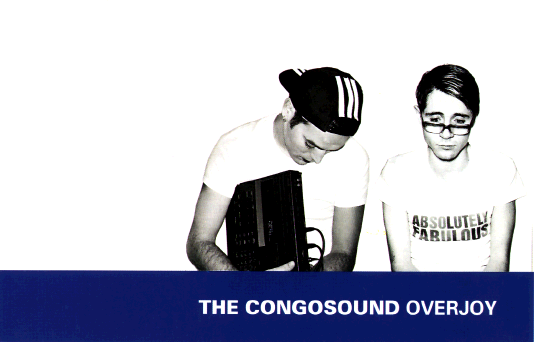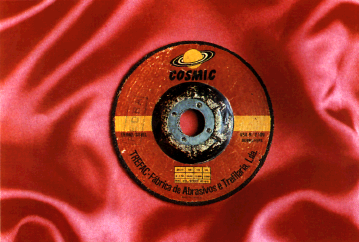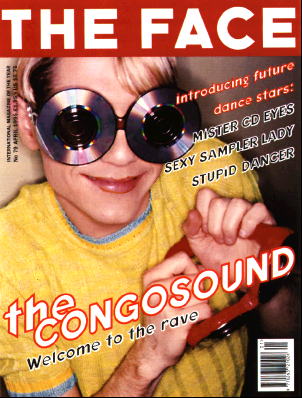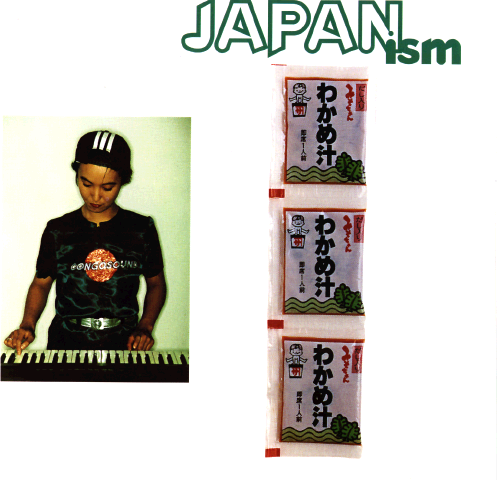The Congosound
If we come to consider that a very important part of the elements that make up the multiple and complex fabric of what we know and call a work of art is currently focused on a series of generic devices from the activity of Experience and the course of one's existence - a situation that is also given by the settings that are typical of the period in which we live - we can conclude that within this broad spectrum of possibilities there must be a quite relevant plan those aspects that refer to the situation of the artist himself as an individual in the world, and to the concretion of a place in the world that is defined not only by great intentions or by transcendental visions and conceptions of the same existence, but also for everything else referring to the simplest desire, the most basic myths, the most immediate needs, the most hybrid situations, and all kinds of everyday contexts m It is more likely to show the affections and dedications of the individual with non-explanatory but reinterpretative will. After all, often the generic activity of the contemporary artist goes through the possibility of offering society a remarkable amount of previously digested elements coming from itself, such as returning to him what is more or less own but from a new or ironically altered perspective: transformational possibilities that in the work of Carles Congost are put into practice from the most nocturnal elements that make up any youthful fashion mythology, and understood this in their sense more literal and, even more prosaic: the nightlife and a very particular conception of fun associated with music and dance tracks.
In short, the work of Carles Congost is a shameless immersion in the areas of everyday experience and in the precise models of life of a part of today's society, especially with regard to its younger segment: for The medium of different formal systems -video, photography, sound, music, painting, drawing, objects-, and all of them used from their instrumental possibilities and sufficient, their work shows the connections between what since the mid eighties is He knows as a culture of clubs and dance music and the artist's own experience as a social subject, trying to dissolve boundaries between different activities - both artistic and non-artistic - while making the discourse of creation show totally imbedded in what is the vital vitality itself marked, in principle, by affections and tastes, myths and desires. And we talk about the work of the artist when, in reality, everything that shows us is rather a kind of prolongation of much of his daily activities slightly transformed, metamorphosed into a series of pieces whose final interconnection passes for the consideration of privacy as a territory that not only refers directly to identity but also constitutes the precious deposit of all those mechanisms that allow to relate the individual to the world, and that he himself allows him, on the other band, and as an artist, to relate it as well.
The main idea, then, of the work of Carles Congost - or its point of departure - is to offer a world and a generic idea - The Congosound as a directly projectual category - that are presented as an ironic, demystifying and quite continuing Undegree, on the other hand, of some of the elements that are fundamental to him as the differential features of his own experience context: the idea of music as the main ingredient of a lifestyle -nocturn, but also diurnal, club culture, dance music, and its fields of relationship and manifestation, the image of the pop and glamor stars, an uncertain myth, not at all repressed, and an iconic and graphic repertoire - images, logos, icons, slogans, gestures- from the most fashionable publications in the field of youth culture in the Anglo-Saxon world, the world in which they are constituted as such and from where almost all of these figures are disseminated and the Its most representative visual repertoires in the international arena. It is an approach, therefore, that makes the inevitable frivolous components and the most trivial iconic resources of its allies in order to be able to offer an ironic and to a certain extent melancholic image of these systems of life and of its dependencies, of what somewhere the new youth planet has been called. As we said at the beginning, why not consider the current circumstances as the engine of current artistic work, even if these are - supposedly not very transcendental? - why not speak of identity even from unorthodox opticians, it is to say, politically incorrect ?, why not make references to contemporary mythography from perspectives far from the usual sick melancholy ?, and why not talk about the identity of the individual without speaking directly?
The iconographic repertoire of Carles Congost seems to be extracted from the central pages of magazines such as The Face or ID, with covers full of heroes and heroines of the musical universe such as Pet Shop Boys, Kylie Minogue, Joey Negro, Junior Vásquez and David Morales, groups, soloists, disc-joke, producers and a whole series of pop stars, all of them authentic cracks, the world of dance tracks and dance music. It treats, in the background, a very specific repertoire of symbols referred to in a very precise way of understanding not only the musical phenomenon itself, but also a whole sort of << glamorous >> design of technological devices and 'a kind of futurism as everyday and almost narcissistic, giving it an ironic and humorous vision, not exempt from a considerable dose of a certain melancholy, as in a singular sad ecstasy of repetition.
This aspect of uncertain narcissism, on the other hand, has a considerable importance in the face of the understanding of some of the works, narcissism that is mixed with the cultivation of the image itself and with the admiration of the image, until to a certain extent stereotypical, from the repertoire of pop stars present in the models that the artist uses. It should be noted that most of their videos, in this sense, are a doubtless version of what would have been surely a performance at another time, like doing a reconsideration of some body art resources, especially as regards the idea of a very precise and deliberate action that takes place in a very specific time.
The Congosound project, in addition to the undoubted, ironic-game of words that it supposes, contributes to the work of Carles Congost to subtly confuse person and character, and character and work, constructing a fiction around the idea of identity and imposture. In this sense, these fictional resources also feed the important presence of an ambiguity that is not at all calculated but very visible both in the confusion of roles and in the confusion of sexual identities (just read the videos carefully) even in the very configuration of certain objects that the artist manipulates as being originating from places full of traditions of all kinds, and making them enter in contradiction with their plausible definition. Here, the presence of Olot, for example, not only refers to a certain rusticity beyond doubt - the place where Carles Congost was born - but to the undoubted artistic tradition that has characterized the city that has defined one of the peaks of Catalan art of the nineteenth century: olotine landscaping, traditionalist returne that has been hard to beat. Olot also appears as an ironic resource full of different meanings.
From the creation of this kind of myth mythical universe to the extreme of the extensive series of drawings of almost automatic, repeated and repetitive features as a mechanical gesture, going through continuous references to the body as an indefinite subject Androginia, the work of Carles Congost follows a single steady direction: that of discrediting models and patterns based on an irony based on a certain spirit of melancholy, always oscillating between what has to be done and what I should never do: as in the Pet Shop Boys song, I would not normally do this kind of things.








